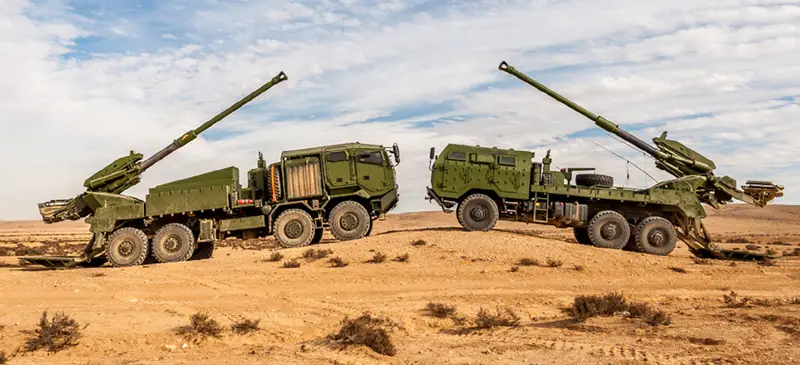The Brazilian Army is actively seeking proposals for cutting-edge truck-mounted howitzers, signaling a significant upgrade in its military capabilities. The primary objective is to acquire two systems initially for rigorous evaluation, with the potential purchase of an additional thirty-four units on the horizon. These advanced truck artillery systems are slated to replace the aging M114A1 towed howitzers currently in service and will be allocated to three army artillery units. This strategic move is a pivotal element of Brazil’s “VBCOAP 155mm SR” Program, aimed at enhancing the country’s armed forces. These truck-mounted artillery pieces are strategically intended to support Brazil’s mechanized forces. The origins of this initiative can be traced back to January 2022 when it was first unveiled on the “InfoDefensa” website.

The overarching goal is to equip the artillery with enhanced mobility compared to the existing towed howitzers while providing the capability to engage targets at ranges of up to 40 km. Unlike their heavier and less deployable counterparts, the tracked M109A3 and M109A5+ self-propelled howitzers, truck-mounted artillery offers rapid redeployment capabilities over roads and highways, including long-distance road marches. Moreover, their truck chassis requires less maintenance and logistical support, making them a cost-effective choice.The specifications set forth by the Brazilian Army call for a 155 mm caliber howitzer capable of utilizing existing ammunition while boasting a maximum range of 40 km. Two well-established companies with fielded systems have already responded to the Army’s request.

One contender is Israel’s Elbit Systems with its ATMOS 2000, featuring a 155 mm/52 caliber gun mounted on a 6×6 tactical truck chassis. It incorporates automated loading and a computer-controlled laying system, delivering a formidable rate of fire ranging from four to nine rounds per minute. This battle-tested system is currently employed by ten armies worldwide and was recently chosen by the Colombian Army. France’s Nexter CAESAR also stands as a formidable option, available for integration into both 6×6 and 8×8 tactical trucks. Interestingly, discussions have emerged about potential collaboration between the Brazilian defense firm AVIBRAS and Nexter on this project. Their joint approach could leverage the truck chassis already in use for the Astros Mk6 multiple rocket launcher system, which is currently in service with the Brazilian Army.

Under this arrangement, Nexter would supply the 155mm gun, mount, and associated systems from CAESAR, while AVIBRAS would handle the integration. CAESAR is currently in service with ten armies globally and has seen combat use. Its adaptability to various truck chassis has been demonstrated on at least four different platforms. CAESAR is designed for a crew of five, equipped with integrated navigation and positioning, assisted loading, automated laying, and a remarkable setup time of just sixty seconds, with displacement taking just forty seconds. Its 52-caliber cannon offers a range of 42 km with Extended Range Full Bore (ERFB) ammunition, and it can reach 50 km with rocket-assisted rounds. The Brazilian Army’s pursuit of truck-mounted artillery aligns with a broader international trend, as many armed forces around the world are increasingly adopting these systems.















